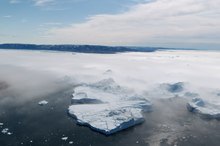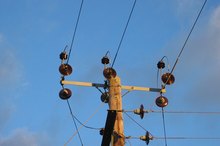Radiation Effects on the Environment
There are many forms of radiation 3. Some forms of radiation are found in the natural environment and others are due to modern technology 23. Whether natural or man-made, radiation can be both harmful and beneficial to the environment 23. The sun, for example can have positive and negative effects on plant and animal life. At low levels, radiation can be beneficial to the environment 123. On the other hand ionized radiation such as x-rays, gamma rays, alpha and beta particles can be particularly harmful in excessive amounts 3.
If you are experiencing serious medical symptoms, seek emergency treatment immediately.
Plant Growth
Natural radiation is often beneficial to plant growth 3. It is necessary for many plants to receive some form of non-ionizing radiation 3. Radiation that produces light in order for photosynthesis to occur is a positive effect that radiation has on plant life 3. However, according to the Environmental Literacy Council, ionized radiation that occurs from nuclear material may result in weakening of seeds and frequent mutations 13. For instance, a nuclear plant, called Chernobyl in Russia leaked in 1986 that caused excessive amounts of radiation pollution in that region 3. A huge cloud of radiation was formed which resulted in a massive amount of destroyed plant life; particularly pine trees in that area 3. High doses of radiation can be devastating to the environment 123.
Animal and Humans
Disadvantages of the Greenhouse Effect
Learn More
The effect of radiation in the environment can be dangerous and fatal to humans and animals 123. The damage it causes depends on the level of radiation and the resiliency of the organism 3. Radiation causes molecules to lose electrons thus destroying it 3. Killing certain enzymes in the body can simply make you sick. However, once radiation damages DNA the body may not be able to repair itself 3. This can increase the chances of both animals and humans developing cancer. According to the US Department of Energy, after two nuclear explosions in Hiroshima and Nagasaki, survivors experience higher cases of cancer and child deformities 2. The nuclear explosions are examples of high levels of radiation 3. However, low doses of radiation can kill germs and decrease the number of food poisoning cases 3.
Marine Life
The effects that radiation has on marine life can be dangerous 3. High levels of UV or ultraviolet radiation can cause a reduction in reproduction capabilities 3. It can also disrupt the timing that plants flower, which can result in changes in pollination patterns. According to NASA, it can also reduce the amount of food and oxygen that plankton produces. Plankton can respond to excessive amount of UV-B or Ultraviolet-B light by sinking deeper into the water. This decreases the amount of visible light required for photosynthesis, which reduces growth and reproduction. An increased amount of UV-B can also increase the amount of ozone produced at the lower atmosphere. While some plants can use this extra layer as a protective shield, other plants are highly sensitive to photochemical smog.
- The effects that radiation has on marine life can be dangerous 3.
- It can also disrupt the timing that plants flower, which can result in changes in pollination patterns.
Related Articles
References
- Environmental Literacy Council: Effects of Radiation
- US Department of Energy: Radiation in the Environment
- NASA: Radiation
- Radiation Therapy. Memorial Sloan Kettering Cancer Center. December 2018.
- Professions in Radiation Therapy. Radiological Society of North America. May 2019.
- Radiation Therapy Basics. American Cancer Society. July 2018.
- Radiation therapy. US National Library of Medicine. May 2018.
- Frequently Asked Questions (FAQs) - Radiation Therapy and Cancer. UCLA Health.
- Vilalta M, Rafat M, Graves EE. Effects of radiation on metastasis and tumor cell migration. Cell Mol Life Sci. 2016;73(16):2999-3007. doi:10.1007/s00018-016-2210-5
- Lutz ST, Jones J, Chow E. Role of radiation therapy in palliative care of the patient with cancer. J Clin Oncol. 2014;32(26):2913-9. doi:10.1200/JCO.2014.55.1143
- Baskar R, Dai J, Wenlong N, Yeo R, Yeoh KW. Biological response of cancer cells to radiation treatment. Front Mol Biosci. 2014;1:24. doi:10.3389/fmolb.2014.00024
- Linear Accelerator. Radiological Society of North America. February 2019.
- External Beam Therapy (EBT). Radiological Society of North America. January 2019.
- Brachytherapy. Cleveland Clinic. July 2017.
- State Licensing. American Registry of Radiologic Technologists.
- Radiation Therapy. Memorial Sloan Kettering Cancer Center. December 2018.
- Introduction to Cancer Therapy (Radiation Oncology). Radiological Society of North America. April 2019.
- Ohri N, Rapkin BD, Guha C, Kalnicki S, Garg M. Radiation Therapy Noncompliance and Clinical Outcomes in an Urban Academic Cancer Center. Int J Radiat Oncol Biol Phys. 2016;95(2):563-70. doi:10.1016/j.ijrobp.2016.01.043
- American Cancer Society. Radiation Therapy Basics.
- Cancer.gov. Radiation Therapy to Treat Cancer.
- Cancer.net. Understanding Radiation Therapy.
- Memorial Sloan Kettering Cancer Center. Radiation Therapy.









